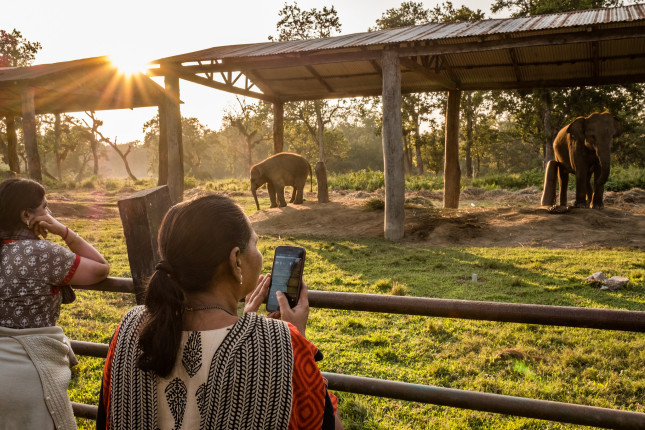-
Evaluating Enterprise: Twenty Years of Conservation Through Sustainable Livelihoods
September 7, 2018 By Daniel Lohmann
“It’s not often that we have the opportunity to go back to a site 20 years later and see what happened,” said Cynthia Gill, Director of USAID’s Office of Forestry and Biodiversity during a recent Wilson Center event on a retrospective evaluation of the “conservation enterprise” approach to biodiversity. Conservation enterprises are income-generating activities that provide social and economic benefits and help meet conservation goals.
In the Petén region of Guatemala, the Rainforest Alliance is helping to combat rapid deforestation by encouraging communities to engage in sustainable agriculture and timber harvesting, eco-tourism, environment education, and sound financial management. In Nepal’s Western Himalayas, USAID partnered with EnterpriseWorks/VITA and the Asian Network for Sustainable Agriculture and Bioresources to teach communities to make handmade paper products, essential oils, and charcoal, which in turn promoted the careful maintenance of forests over previously common and damaging slash-and-burn farming, overharvesting of non-timber forest products, and unmanaged grazing practices.
Through the retrospective, USAID evaluated the theoretical basis for cultivating conservation enterprises: that if communities benefit economically from conservation enterprises, their attitudes and behaviors towards biodiversity conservation will improve. The evaluation found that sustaining conservation outcomes requires a wide variety of actors and factors, including strong local leadership, robust measurement, effective evaluation, and the incorporation of new information. According to Diane Russell, a former biodiversity and social science advisor at USAID, the retrospective “provides solid evidence of how [the conservation process] plays out in the real world.”
The evaluation concluded that efforts were largely effective—when certain enabling conditions were met. For example, a forest and watershed conservation program in Nueva Vizcaya, Philippines, proved very successful: The Kalahan Educational Foundation employed community members in a fruit processing plant, while simultaneously incorporating ecology into local curricula to lay the foundation for local conservation programs.
By combining an understanding of stakeholder groups within communities and an appreciation for the proper scale of behavioral change, conservation enterprise projects can initiate what Judy Boshoven of USAID’s Measuring Impact contract and a Program Officer at Foundation of Success referred to as a “virtuous cycle,” where livelihoods and biodiversity are mutually reinforcing.
Boshoven also called for more research “looking at enterprises that have failed to find out why they haven’t lasted.” Vigorous review of program effectiveness can also strengthen outcomes. For example, participants in the International Gorilla Conservation Program’s (IGCP) efforts to establish eco-lodges and community camps in Bwindi-Mgahinga expressed contrasting opinions of the program’s efficacy. While one stakeholder insisted that the livelihood support provided by the program was crucial, another argued that inequitable benefit distribution undermined its efforts. As a result, IGCP is taking steps to adaptively manage the program and improve its effectiveness.
“Conservation enterprises are not a silver bullet,” said Gill, “but when you build on evidence, and a foundation of community and commitment, they can be a part of the solution.”
Sources: Asia Network for Sustainable Agriculture and Bioresources, Bwindi Mgahinga Conservation Trust, Indigenous Affairs, Natural Resources Management and Development Portal, Rainforest Alliance, U.S. Agency for International Development
Photo Credit: Chitwan National Park Elephant Breeding Center. Sauraha, Chitwan District, Nepal, November, 2017. Photograph by Jason Houston for USAID
Topics: community-based, conservation, development, eco-tourism, economics, environment, Eye On, featured, Guatemala, Nepal, Philippines
 A Publication of the Stimson Center.
A Publication of the Stimson Center.



